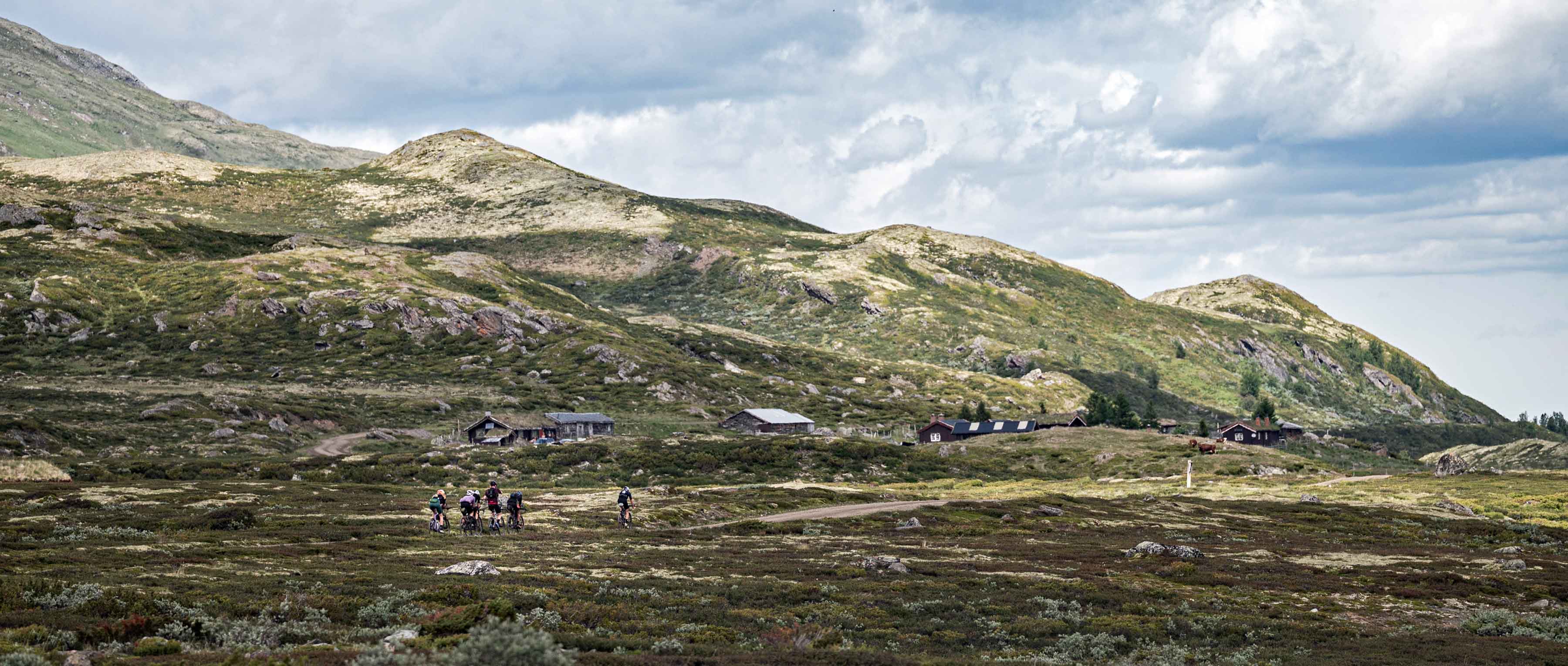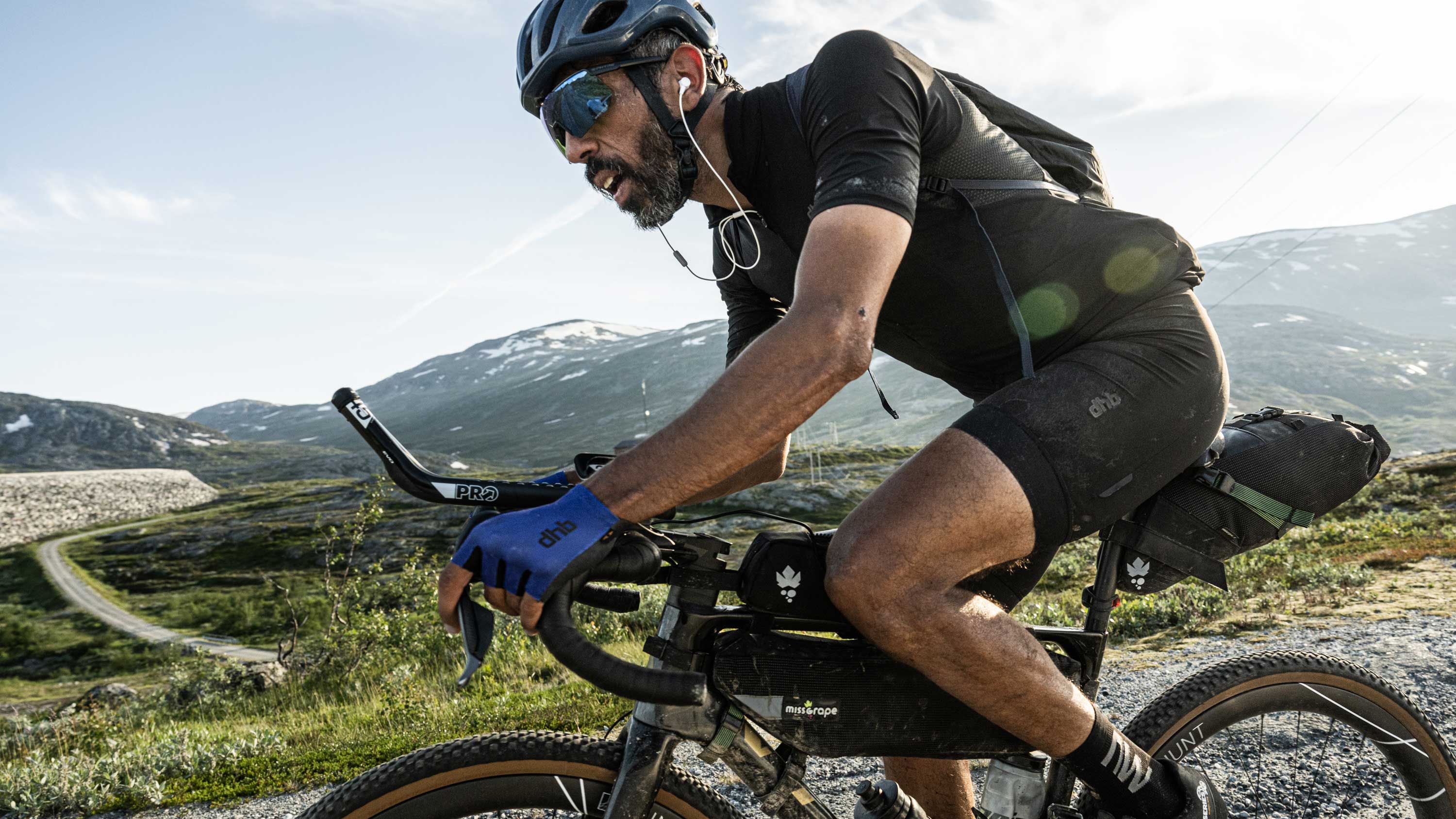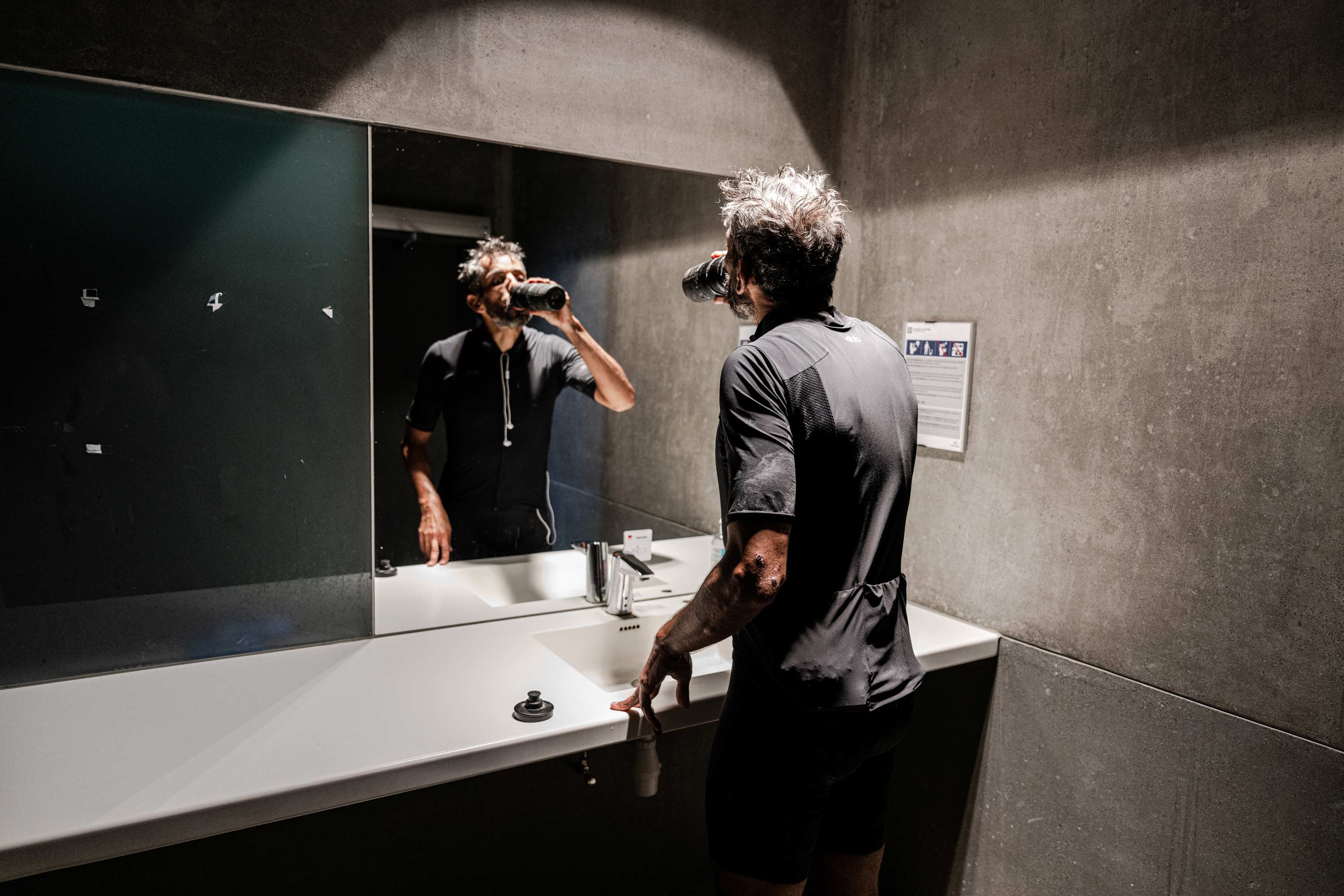About a year ago, Shimano Gravel Alliance rider Sofiane Sehili heard about a new Norwegian bikepacking race with a very interesting concept. He immediately sensed that he had to be there.
Taking place in Norway at the beginning of summer, the event is called The Bright Midnight and it promised an ultra-cycling gravel race with virtually no hours of darkness. I’ve been on the competitive bikepacking circuit for a while – racing on 5 continents and finishing more than 20 ultras – so it takes something special to pique my interest. Continuous daylight did just that - it had me intrigued immediately and enthusiastic soon afterwards. Being good friends with the organiser Justinas Leveika (who happens to race ultras as well), I sent him a message telling him he could count on me to be there.

July came and after flying to Oslo, I leisurely rode the 400 km to Tolga, the small town where the race would start and finish. When Justinas came up with the idea for the race, he imagined that maybe 40 people would travel all the way to this small community tucked in the middle of Norway. In the end, it was close to 200 of us that were eager to experience remote Norwegian wilderness and days that would never see the sunset. With the influx of racers, Tolga’s population saw a temporary 15% increase!
After a tumultuous start of the season due to a nasty dog bite suffered in Greece, I needed a win to boost my confidence. I felt a little bit of pressure going into the 1,040 km race, but this is something that I’ve learned to deal with it.

On race day, I was ready. The race started fast and I knew I needed to stay at the front, where I could see a few familiar faces, including fellow Frenchman Clément Mahé and the Belgian rider Christophe Dijkmans. After 100 km or so, it was just six of us in the lead group, still pushing a fast pace despite a couple of short rough sections. It’s worth noting that outside the rocky singletrack sections that were only a few kilometres long, the gravel was on par with the smoothest and fastest I have ever ridden. On hard-packed and perfectly graded roads, our little pack spent six hours flying until we hit the first town, where four riders stopped to resupply. I kept going, followed only by Clément.

A paved section then led us to a much rougher gravel road with countless river crossings. A hike-a-bike section ensued, lasting roughly half an hour and soaking our feet thoroughly. I lost sight of Clément on a descent, but I caught him an hour or so later as he resupplied in a gas station. I chose, foolishly, not to stop there, quickly regretting it. Soon afterwards came a long and steep climb and I had all the symptoms of low blood sugar and a lack of hydration. I had to let go of Clément as I stopped to fill up my bottles in a stream. It took a little bit of time for my body to process the food and in the meantime, Philippe Béchet, a rider from Lausanne, caught back up to me and immediately dropped me. From this point on, I enjoyed some alone time on a spectacular plateau, dotted with a few wooden cabins.

We’d been in the race for roughly 13 hours and we were moving into the second act of three. After riding perfect gravel on a succession of high plateaus, we started the Fjord section, which would turn out to be entirely paved. The skies were clear, which meant that no darkness at all was to be expected. Between midnight and 2 am, the daylight merely dimmed and I observed the weird transition between dusk and dawn.

I resupplied for the first time on a long, flat section. In the middle of the night, Christophe (who had caught me a few minutes earlier) and I found a 24-hour store where I was very happy to find chocolate milk and candy - the two things I was craving. It was an honesty shop, meaning there was no shop assistant.
On our way to Norway’s most famous climb, the Trollstiegen, which means the troll’s ladder, we were joined by Rasmus Bozyk of Germany. We could not have hoped for better timing. This scenic road is one of Norway’s biggest tourist attractions and starting the climb around 4 am, we had it to ourselves instead of being surrounded by campervans and rental cars.

Looking back, actually, the timing could have been a tiny bit better - we made it to the only ferry crossing on the course with an hour to spare. I took advantage of this truce to get some food and fluids in me, change clothes and dry my feet. When all of this was done, I lay on the floor and closed my eyes, but was not able to sleep.
We rolled out of the ferry, the five of us (Clément, Philippe, Christophe, Rasmus and I), knowing very well that in about 500km, one of us would raise his arms. The truce continued up the climb that came straight after the crossing. Nobody was willing to set the pace and we got to the top rather slowly. I had my eye on the next climb, which was the longest and highest on the course - 20km at an average 7% gradient. I attacked straight off the bat, in the small town of Geiranger. Clément was the only rider able to follow and after 1h45 of hard riding, we got to the top together, having opened up a sizable gap on Rasmus, Philippe and Christophe.

After a short downhill, we were happy to get back on gravel roads. I was much less happy to find that I had, again, run out of water and that there were no streams to fill up my bottles in this section. After an hour or so, I was too dehydrated to keep up with Clément and he dropped me once more. Thankfully the next town was not far away. I stopped there, drank a lot, gobbled a hotdog and a gas station cheeseburger and resumed my chase. It took me four hours and a series of seriously steep climbs to catch him as he was just waking up from a nap. We rode together through the stunningly beautiful Dovre National Park en route to a crucial resupply point - the town of Alvdal, which lies 200km away from the next resupply on the course.

We had to deal with some rough stuff before getting there. It was a little before 11 pm when we reached it and of course, we stopped for food. I ate two more hotdogs and stocked up on candy. Some more rough gravel followed. This final third of the race was definitely not as fast-rolling as the first one. The weather was also colder. The cloudy sky meant that the night was not as clear as the day before. Deep in the woods, it even sometimes seemed like a proper night.

Around 1.30 am, Clément stopped to nap as he couldn’t focus properly on the track anymore. I still felt alert and decided to keep going. Dawn found me at the top of a climb, on a barren plateau and I started to feel sleepy. I decided to sing to myself to keep me awake, which worked perfectly. After more than 40 hours of continuous pedalling, pushing hard was not an option, so my aim was just to be efficient and hope that it would be enough to keep Clément 30 minutes or so behind. I managed to do more than that. But while the gap over Clément kept growing, in the meantime, Rasmus was getting closer which meant I had to be vigilant all the way to the finish line. With more steep climbs and a fierce headwind, the last 100km to the finish felt endless.
After 51 hours and 54 minutes, I was back in Tolga and raising my arms for the first time since my win on the Silk Road Mountain Race last August. Rasmus finished very strongly and followed less than an hour later. Clément, who had majorly impressed me for 800km, finished a couple of hours after me. But by that time, I was already in bed, sleeping and digesting the elk burger they served me at the finish.
In the end, I’m super happy about both the victory and my performance. With less than 1.5 hours of stopping time (not counting the enforced stop at the ferry) and a 21.2 km/h average speed on the bike, The Bright Midnight ranks as my fastest “short” ultradistance event ever. When you’ve been competing for seven years, finding out that you’re still getting better is quite pleasing.
I absolutely loved the atmosphere around the race. While we were a big group of riders that took to the start line, it’s a small and friendly organisation hosted by a tiny town that seemed very pleased to be the centre of the bikepacking world for a few days.

With stunning landscapes and countless empty gravel roads, Norway delivered. We were also blessed with incredible weather, experiencing only two five-minute showers during the whole race. Those who took longer to finish were not that fortunate and spent a lot of time riding in the rain. So sometimes it’s better to be fast. Well, actually, in my experience, it is always better to be fast!